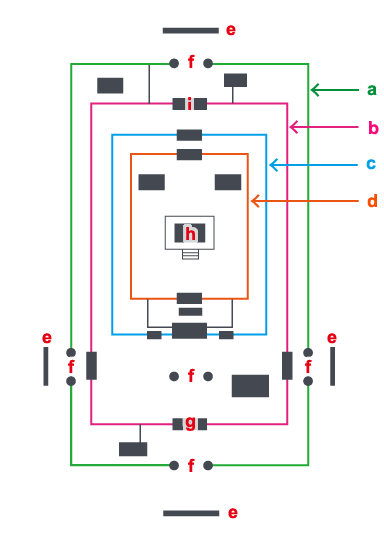|
||
 |
||
| Ise Jinguu Naikuu Ι¨_{ΰ{ | ||

@
(C)2001 Japanese Architecture and Art Net Users System.@No reproduction or republication without written permission.
fΪΜeLXgEΚ^ECXgΘΗASΔΜRecΜ³f‘»E]ΪπΦΆά·B
|
||||||
| @ | ||||||
| mizugaki@_ | ||||||
| KEY WORD :@architecture / shrines | ||||||
| @ | ||||||
| Also written βί_, _. A fence. Originally, mizugaki referred to a fence composed of trees surrounding a forest or mountain where the spirit of a deity dwelt. During the *Kofun jidai Γγ, it was a fence placed around the abodes of an emperor and other sacred precincts. With the introduction of Buddhism, the term came to refer to the fence surrounding the *honden {a, wherein the spirit of the deity revered at a shrine was thought to dwell. At Ise Jinguu Ι¨_{, the holiest of shrines, Naikuu ΰ{ (inner shrine) and Gekuu O{ (outer shrine), are surrounded by four fences. However, an illustration of Naikuu dated 1709 that appears in Watarai Nobutsune's xοo, Naigekuu densha-zu ΰO{aΙ}, showing a fifth fence added to the front part of the shrine. The innermost fence is called mizugaki. It is arranged in sections of vertically set boards with every sixth one extending above the other five. Although the boards fit together tightly along the top, they are distinguished by six cuts forming a design of dentils. Example: Ise Jinguu Naikuu; Gekuu, in Mie prefecture; Sumiyoshi Taisha ZgεΠ (Edo period) in Osaka. At Sumiyoshi Taisha, there are four small identical shrine buildings but they are surrounded by only two fences. The boards of the mizugaki are set vertically. They are painted red-orange with tops cut into points which are painted black. | ||||||
| @ | ||||||

|
||||||
@ |
||||||
| REFERENCES: | ||||||
| @ | ||||||
| EXTERNAL LINKS: | ||||||
| @@ | ||||||
| NOTES: | ||||||
| @ | ||||||
(C)2001 Japanese Architecture and Art Net Users System.@No reproduction or republication without written permission. fΪΜeLXgEΚ^ECXgΘΗASΔΜRecΜ³f‘»E]ΪπΦΆά·B |
||||||
| @ |